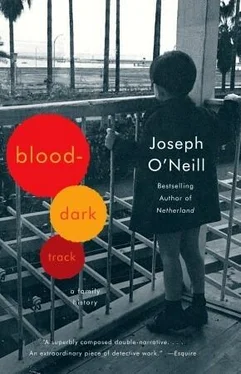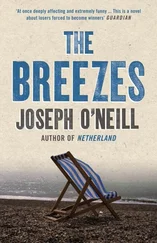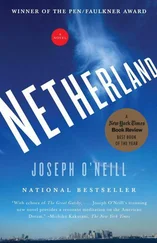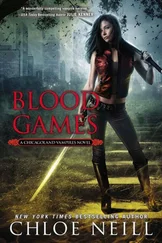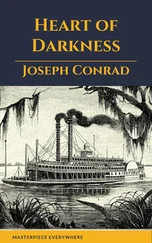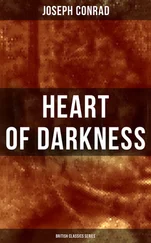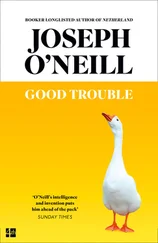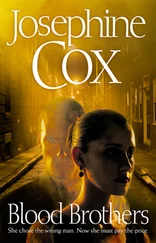I drove out of the Manch estate marvelling at the social reduction of these once-so-powerful families, whose way of life, which once turned on fastidious exclusiveness, now depended on the number of strangers they could persuade to stay in their homes. The change was, in its way, revolutionary. Moreover, by my unannounced visit the ancient, quasi-mystical distance that had separated the Conners and the O’Neills had suddenly shrunk to more normal proportions. They would no longer seem quite as powerful and strange and inhuman, and perhaps we, in the light of day, might no longer figure as purely anonymous shadows moving around the black river.
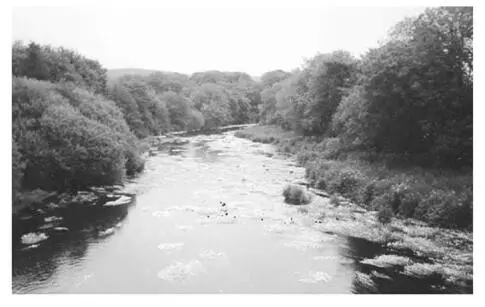
I stopped the car a couple of hundred yards away, by the Conner’s West Farm, and parked on the verge of the road. I knew, from a recent visit here with my uncles Brendan and Jim, that the river flowed very close by, unseen behind hedges and greenery. I climbed over a locked gate (no entry was permitted without authorization, a sign declared) and walked through uneven grassland, some of it thigh-high, toward the river. I stepped over the defunct track of the old railway line. I came to the river. A black concrete ridge had in recent years been built into the bank as a fortification against the erosive current. Waste paper and a plastic bottle disclosed that someone had not long ago been fishing here. On the far side of the river were open fields; to the east, about half a mile away by the Curraghcrowley townland, was a wooded height. Kilcascan Castle, the only other Big House in the locality and the former home of the O’Neill Daunt family (no relation), was hidden by the magnificent hilltop trees, in the shelter of which my grandfather’s getaway car had sometimes been parked.
I was standing by the pool known as the Key Hole, which even in daylight was like a still pool of ink. I tossed a stone into the pool; no salmon moved. I remembered that in the Skibbereen Southern Star of 4 February 1956, there had appeared a report about an action brought by Henry Conner, of Manch House, against Cork County Council in respect of loss suffered as a result of a poisoning of the Key Hole with bluestone by unknown poachers acting out of revenge. Six salmon — valued at £49 16s. 0d. — and 35 brown trout had been killed.
There was an irony about the poison used, because it was bluestone (a compound of copper sulphate) that finally eliminated the fungus which, in the second half of the 1840s, had repeatedly reduced the Irish potato crop to a black, rotting mess, a catastrophe that led to anything between 750,000 and 1.5 million excess deaths and a million or more emigrations. This part of Cork had not escaped the effects of the Great Famine. The Enniskean parish population fell by 46 per cent from 1841–51, the worst affected being the labourer-cottier class, whose dietary dependence on potatoes exposed them to starvation and whose living conditions — it was not unusual for a family to sleep with its pig on the mud floor of a turf-heated cabin — made them vulnerable to the cholera, dysentery and typhus epidemics that (as in the Mersin of those days) accounted for so many lives. The lack of decent shelter was exacerbated by opportunistic evictions and clearances undertaken by landlords (whose primary residence was often in England) to expand and consolidate their holdings. The townland of Ardkitt, which at that time was poorly drained and contained much more bog and rough pasture than today, saw its population drop by 35 per cent, and the village of Enniskean was depopulated by 53 per cent. The Great Famine was on my mind because, it so happened, its 150th anniversary had been marked earlier in the month by the Great Famine Event, in which President Mary Robinson and other notables had taken part. The Event took the form of musical concerts, readings and historical reconstructions, and the media reported it as a great success much enjoyed by young people.
It was unclear how the O’Neill family fitted into this scheme of devastation. There wasn’t any family story about the Great Hunger, and I couldn’t even be sure that my ancestors — Jim O’Neill’s great-grandfather’s generation — had lived in this area at the relevant time. At any rate, Jim O’Neill had surely been displeased about the bluestone incident. However much he might have sympathized with the infliction of injury on Ascendancy landowners, he had a great respect for and, more importantly, a direct interest in the welfare of river and its stock; and the Key Hole was perhaps his favourite salmon holding pool.
I walked east along the bank. The trees grew thicker here and provided more cover than they did in the poaching days, when the railway company kept the branches in check. The bank, at this point a narrow ledge caught between the river and the railway embankment, rose six sheer feet above the water; dragging a net along here in the slippery darkness, from one pool to the next, could not have been an easy or safe business. The bank descended to water-level and I came to another bulge in the river. Here, among dripping alder trees, was the pool known as the Forge Hole. My grandfather used to reckon that if there was salmon in the Forge Hole there would be twice as many in the Key Hole.
There was something illicit about my solitary stroll, even though I was here with the consent of the Conners. But I would still have had to explain myself had a bailiff appeared and challenged me, and it was odd that I, an outsider with an English accent, might be less suspect in such a situation than a local like my grandfather. Which was not to say that Jim O’Neill was deterred by the laws of trespass or the people who enforced them. As a teenager (Grandma had told me), he was walking through the grounds of Kilbrittain Castle when a woman with a shotgun appeared and said to him, ‘No trespassing.’ ‘I’m not trespassing,’ Jim said. ‘I walked this land before you did and I’ll come and go as I please.’ On an other occasion, Jim returned from the river to his car to see his young son, Jim Junior, in the company of two men. He strolled up and asked peremptorily, ‘Who are you?’ ‘I’m a guard, that’s who I am,’ replied one, stating the obvious. ‘Did you identify yourself to my son?’ Jim asked, noting that the men’s uniforms were hidden under overcoats. ‘I did not,’ said the guard. ‘Well then, what are you doing frightening my boy?’ ‘Dad,’ Jim Junior piped up, ‘he wouldn’t believe me when I told him you were gone into the ditch for a call of nature.’ My grandfather — who to the guards’ knowledge had been gone for over half an hour — looked aggressively at the two men. ‘How long I’m in there is my own business, do you understand?’ Jim’s antipathy for the authorities was such that, in the late ’fifties, he resisted ‘out of principle’ the attempts of John Scanlon, Chief Inspector, Cork Board of Fishery Conservators, to recruit him to the corps of Bandon bailiffs. Indeed, Jim actually succeeded (quite how was unclear) in securing the active assistance of two of the Chief Inspector’s men, who would meet my grandfather in a pub in West Cork and tip him off about the whereabouts of the fish and the patrols. One of the two bailiffs, the story went, was a big bully of a man, but he was scared of Jim O’Neill.
The last time he went poaching was here, at Manch. It was in 1961, and with him were Jim Junior, Brendan, and Brendan’s brother-in-law Seán O’Callaghan, who had just served seven and a half years in prison. The net was in the water when suddenly the bailiffs appeared. My grandfather and Seán ran for it in different directions, while Brendan — in accordance with precedent and practice and legislation, he told me dryly — assumed the responsibility, as the man on the opposite bank from the bailiffs, of trying to hang on to the net. There was a tug of war, which Brendan won by securing the net around a tree. He hid the net in Glenure farm, where the Kilmichael ambushers found billets, Brendan said. Everybody got away that night, even Seán O’Callaghan, who was picked up by the O’Neills near the Red Fort, outside Ballineen, in the early hours of the morning.
Читать дальше
Конец ознакомительного отрывка
Купить книгу
